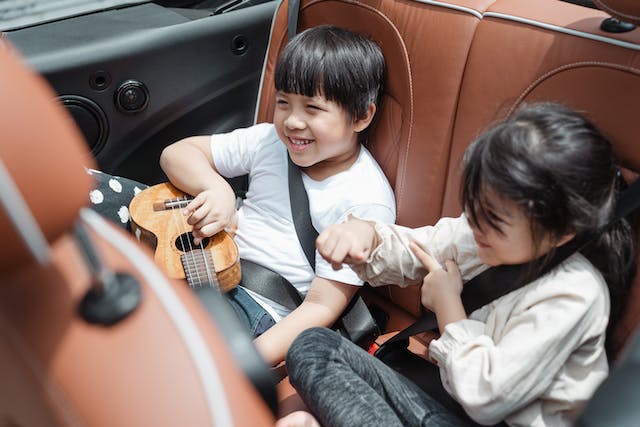
For many years, cars have symbolized freedom, excitement, and the joy of hitting the open road. But along with this sense of adventure came a serious concern: keeping our most precious passengers safe – our children. Fortunately, the story of child safety in cars isn’t just about accepting risks, but about a remarkable journey of innovation driven by both new technology and a strong commitment to protecting our little ones.
Precarious Beginnings (1930s-1950s)
Picture this: it’s the carefree 1930s, and cars are more like basic metal chariots than the advanced vehicles we have today. Back then, people didn’t really think much about keeping kids safe in cars. If they did, they’d use makeshift things like blankets, pillows, or even laundry baskets to keep them comfy. Having a special seat just for kids in cars was almost unheard of – back then, making sure kids were comfortable and could see out the window was more important than protecting them in a crash.
Regulations and Research Lead the Way (1960s-1970s)
But as more people started driving cars and accidents happened more often, things began to change. In the 1960s, there was a growing outcry from the public for better ways to keep kids safe in cars. This was sparked by tragic accidents and the efforts of parents and activists who were determined to make a difference. This growing awareness led to the creation of the National Highway Traffic Safety Administration (NHTSA) in 1966, which was a huge step forward in making sure there were better rules and research about keeping kids safe in cars.
The car seats used in the 1960s and 70s were much simpler compared to the advanced ones we have today. They typically had basic lap belts and metal frames, offering minimal protection in case of a crash. However, they marked an important step in realizing the need for special seats to keep children safe while traveling.
A Shift in Protection (1980s-2000s)
In the early 1980s, a significant breakthrough happened: researchers found that placing infants facing the rear of the car greatly reduced the risk of serious injuries in accidents. This discovery completely changed how we think about child safety in cars, leading to a new focus on designing car seats that faced the rear, had better harness systems, and used materials that absorbed energy in a crash.
Throughout the 1990s and 2000s, improvements kept coming quickly. Car seats with five-point harnesses, tethering systems to make them more stable, and standardized attachment points like ISOFIX all made car seats safer and easier to use. But it wasn’t just about technology – understanding how to install and use car seats correctly was just as important. That’s why educational campaigns and programs were launched to help parents and caregivers learn how to keep their children safe on every trip.
Education and Awareness (2010s-Present)
Today, we’re on the brink of a new chapter in keeping children safe in cars. With technology advancing, we now have sensors in car seats and apps that can track things like temperature, weight, and even how a child is breathing while they’re strapped in. This gives us real-time information about how our children are doing during car rides. Looking ahead, self-driving cars are becoming more of a reality, which brings up questions about how they’ll affect the safety standards we have for children in cars.
The future of keeping kids safe in cars is like a quilt made up of ongoing research, new technologies, and a strong commitment to safety. According to a Colorado Springs car accident attorney, just as we’ve gone from using basic seats to harnesses, and then to high-tech sensors, there are even more improvements on the horizon to better protect our little passengers.
But with all this exciting progress, one thing stays the same: it’s up to us to keep our children safe. By always buckling them up correctly, staying updated on the latest safety advice, and supporting efforts to make cars safer for kids, we can make sure every car ride is not just fun, but also filled with care and protection for our precious little ones.
Let’s remember that every time we click a buckle, tighten a strap, or carefully install a car seat, we’re showing our unwavering love and commitment to keeping our children safe. As we continue to learn and adapt to new ways of keeping kids safe in cars, let’s hold on to this strong motivation. This way, every trip we take can be filled with the assurance of a safe and happy arrival for our little ones.